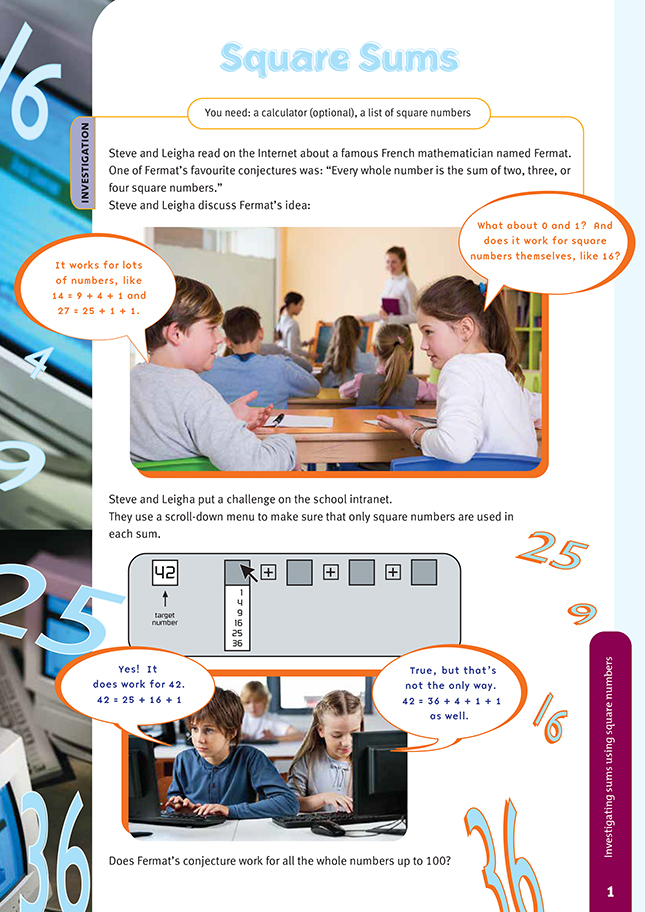This is a level 5 number activity from the Figure It Out series. It relates to Stage 8 of the Number Framework.
A PDF of the student activity is included.
Click on the image to enlarge it. Click again to close. Download PDF (214 KB)
investigate squares of numbers
A calculator (optional)
FIO, Level 4+, Number, Book Six, Square Sums, page 1
A list of square numbers
A dictionary definition of a conjecture is that it is an unproven assertion. Basically, a conjecture is a mathematical idea that holds for many instances but may not hold for some number that nobody has yet investigated. Mathematicians have not yet found any way to demonstrate beyond all doubt that the idea in question logically holds for all possible instances. In other words, no proof is yet available to allow it to
be accepted as a full theorem.
The students will find that there are several solutions for some numbers. They could compare their solutions with a classmate’s to find other possible solutions. This reinforces the idea that in many mathematical problems there is no one “right answer”.
A possible extension would be to ask the students to find other conjectures of Fermat’s and investigate one or more of them. For example, Fermat’s last conjecture, called “Fermat’s last theorem”, is that the equation xn + yn = zn can have no solution when n is an integer greater than 2. Fermat wrote in the margin of a book
on equations that there was not enough space for him to record what he called his “truly wonderful proof”, and unfortunately he died before he recorded it anywhere else. Students who can work competently with exponents could try a few examples to see whether Fermat’s idea that no solution is possible seems to hold true, for example, 23 + 33 = 3 or 44 + 54 = 4.
Answers to Activity
Investigation
Apart from 0 and 1, Fermat’s conjecture works for all the whole numbers to 100, including all the square numbers. Several solutions are possible for many
numbers. For example:
50 = 49 + 1 or 36 + 9 + 4 + 1
71 = 36 + 25 + 9 + 1 or 49 + 9 + 9 + 4
